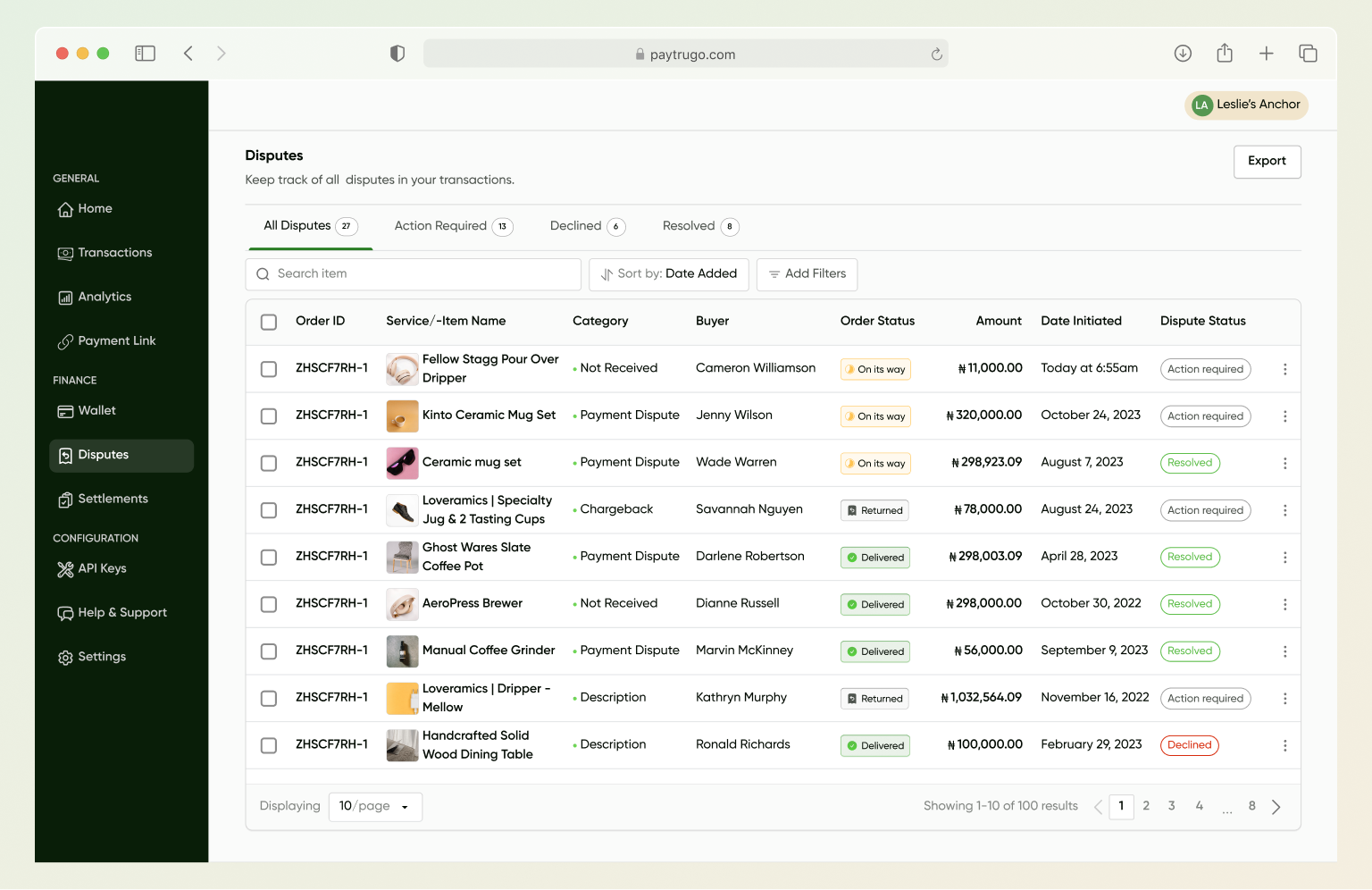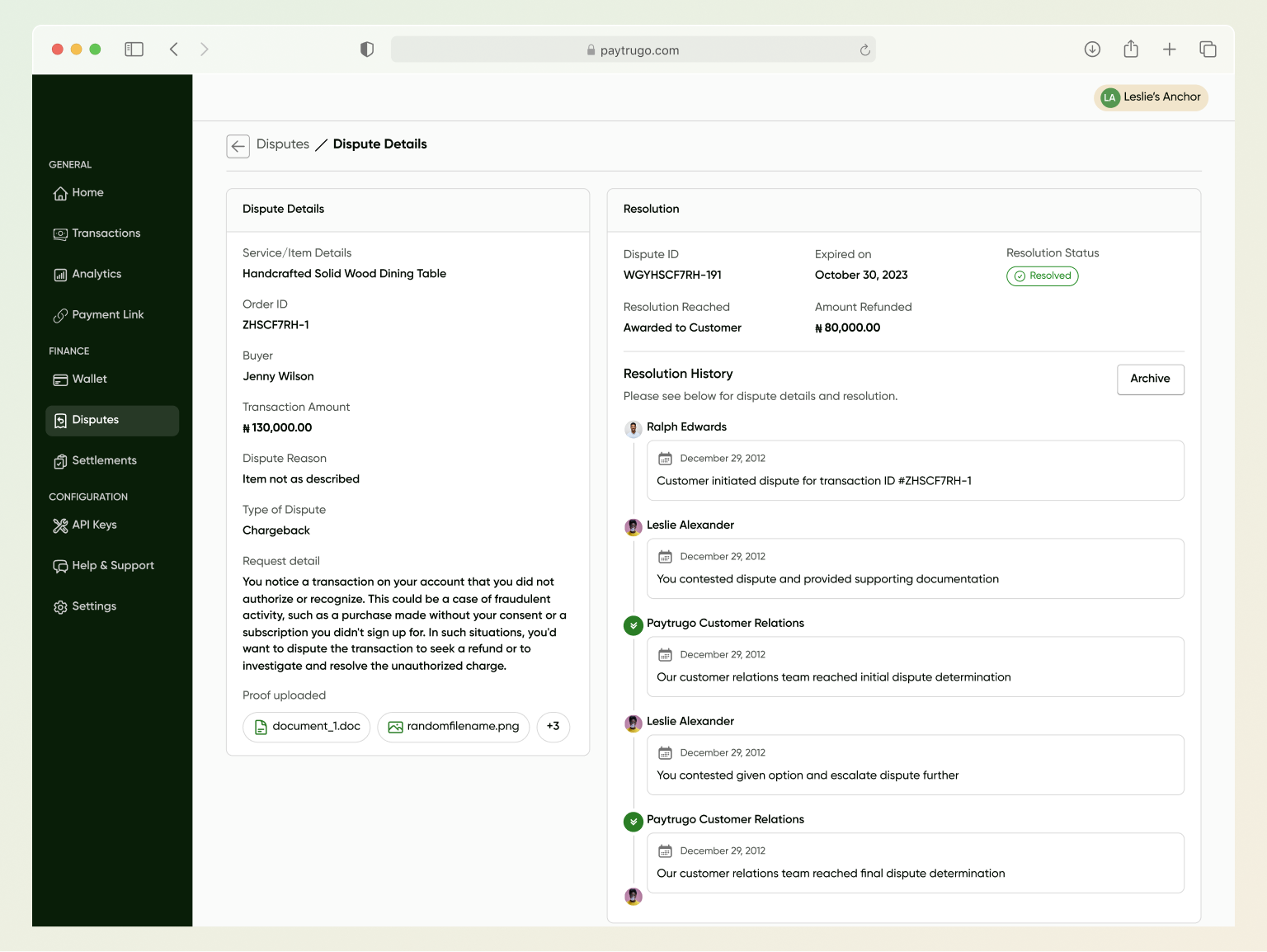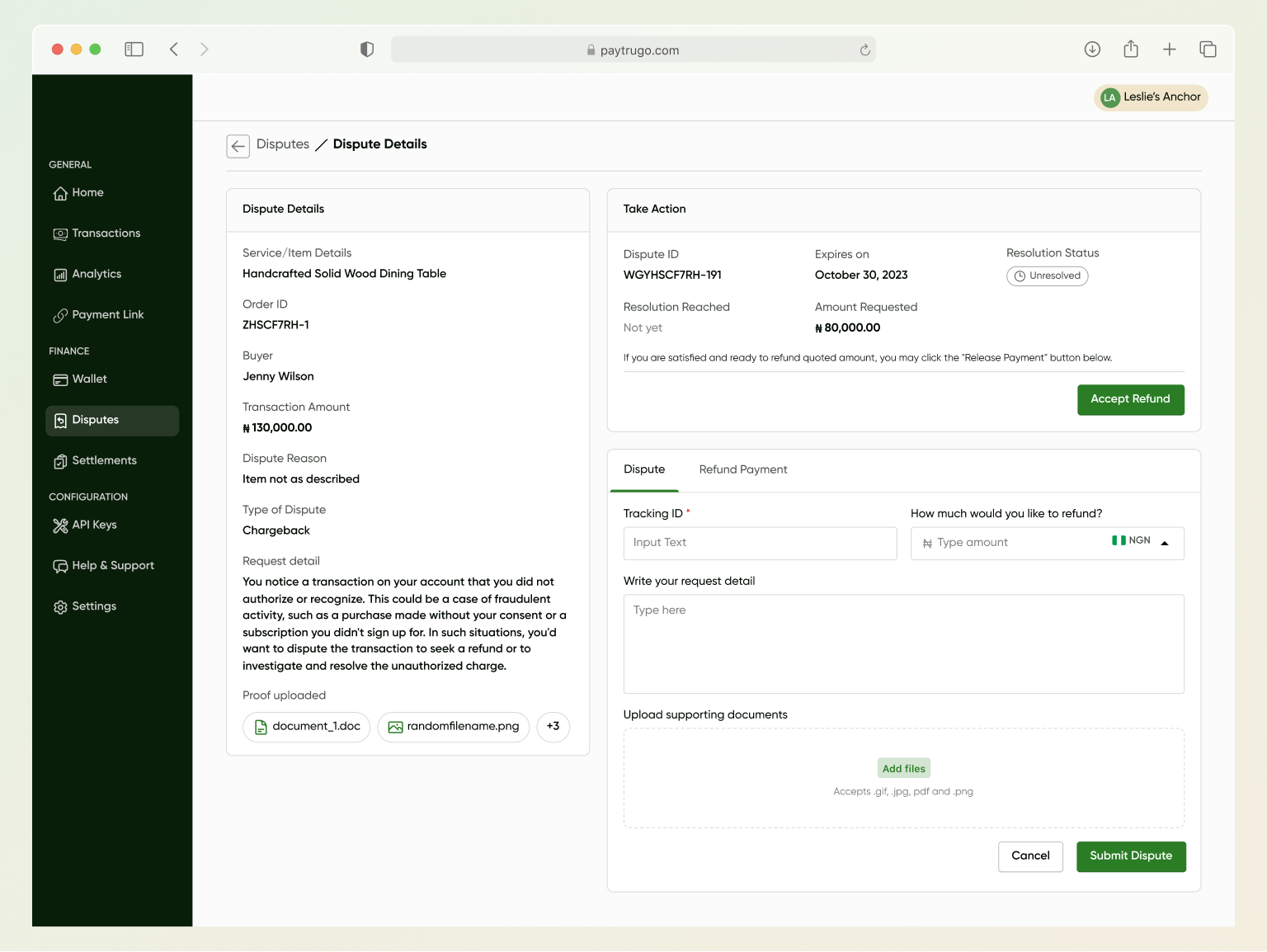2023
Contract
Market Research / UI design
UI Designer
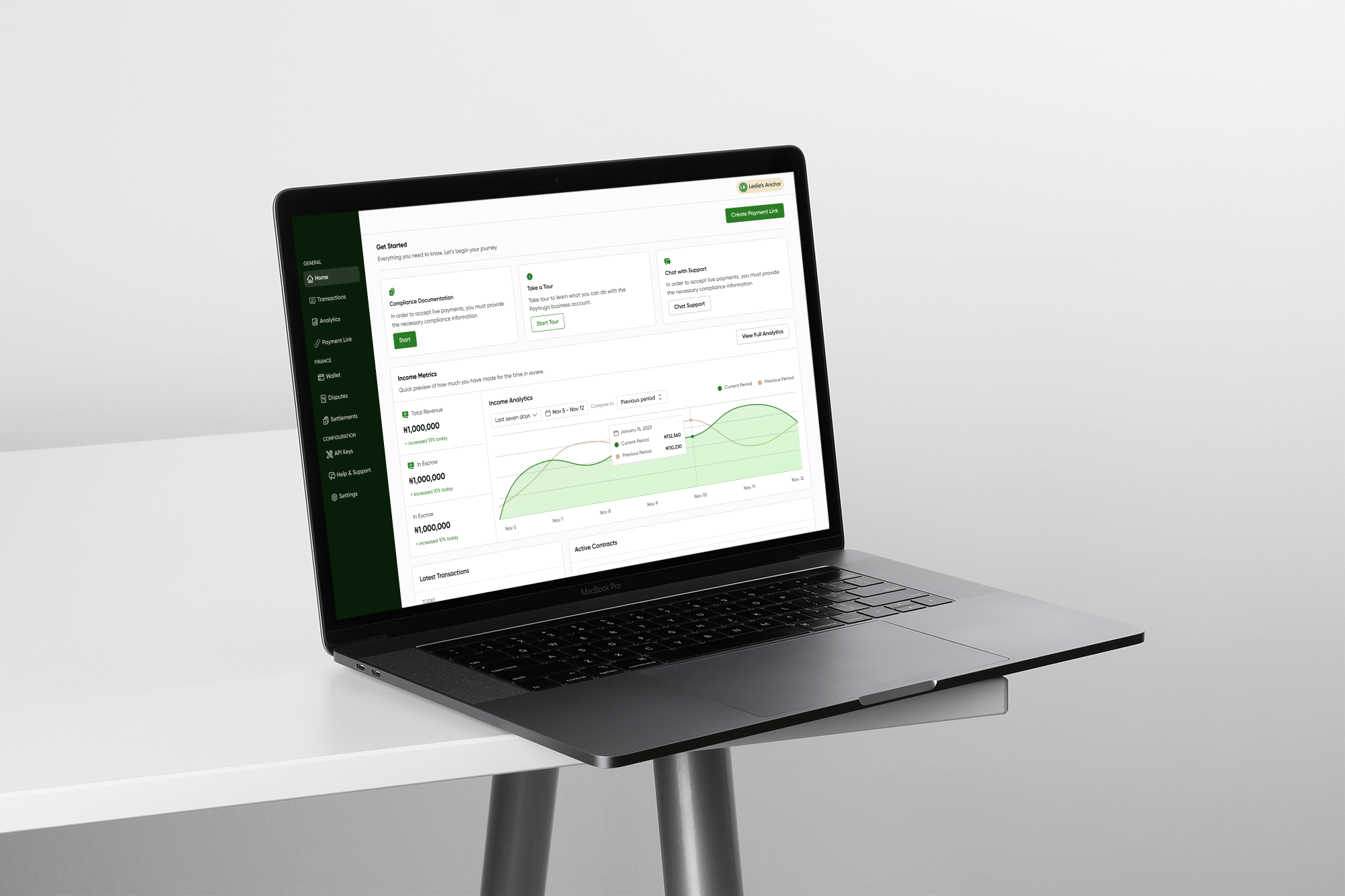
It is evident that e-commerce market has grown considerably worldwide over the past few years. The convenience of online ordering and payments has been an important factor for this growth. Also, it is expected that the growth will continue as more businesses move online. However, in Nigeria, e-commerce services is still impeded in a lot of ways. There are many micro businesses that provides onlines services but payment mediation for many has been smooth. Paytrugo intends to facilitate this expansion by simplifying the payment process for both buyers and sellers. By acting as a trusted intermediary, Paytrugo provide businesses and customers greater confidence in online transactions, ensure satisfaction, and enable continued e-commerce growth through secure and reliable alternate payment services.
I was hesitant to take a project of this size while studying but it presented me an opportunity to make a difference in a struggling and difficult market. I have always wanted to be involved in fintech ecosystem of Nigeria and this was my shot. I have always found many platforms in the Nigerian fintech market difficult and cumbersome to use, and my experience isn't unique. Nothing is more evident of this than many customers and businesses becoming more reliant on the age-old cash on delivery payment method. Of course, this affects the scalability and efficiency of these businesses.
01
How much faster is dispute mediation compared to alternatives?
02
Is the resolution process considered simple and transparent by users?
03
Do users see Paytrugo as more secure and identity-verified?
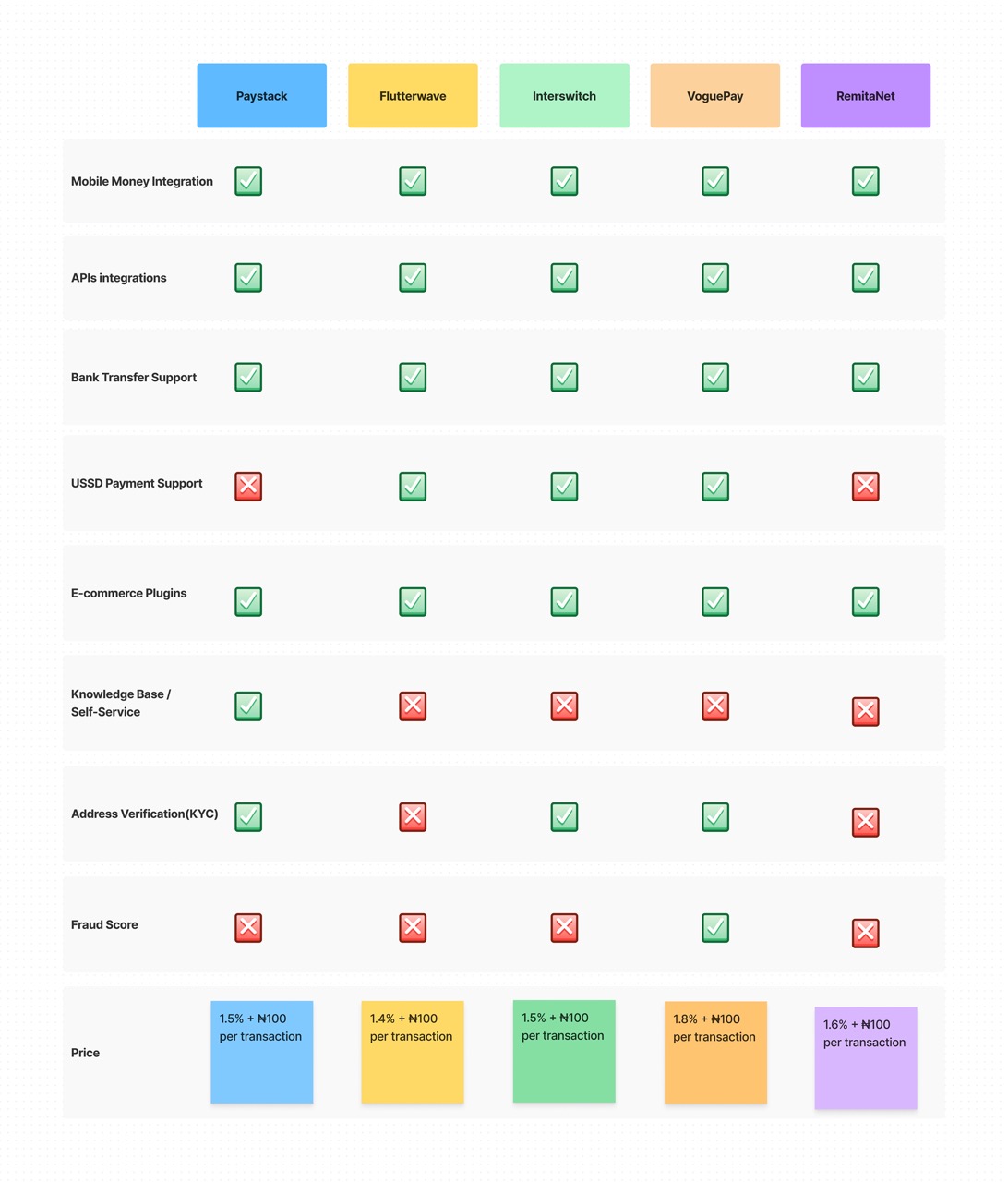
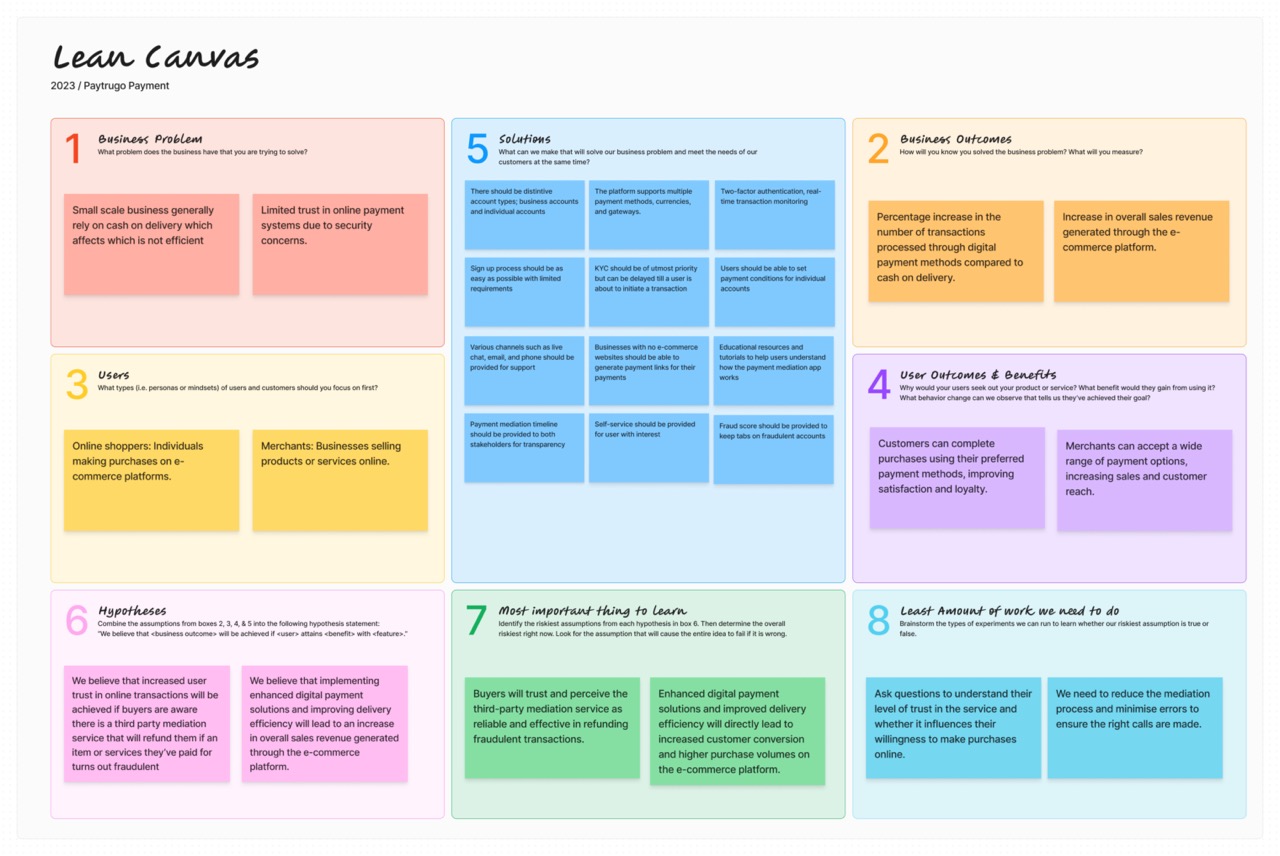
%20Large.jpeg)
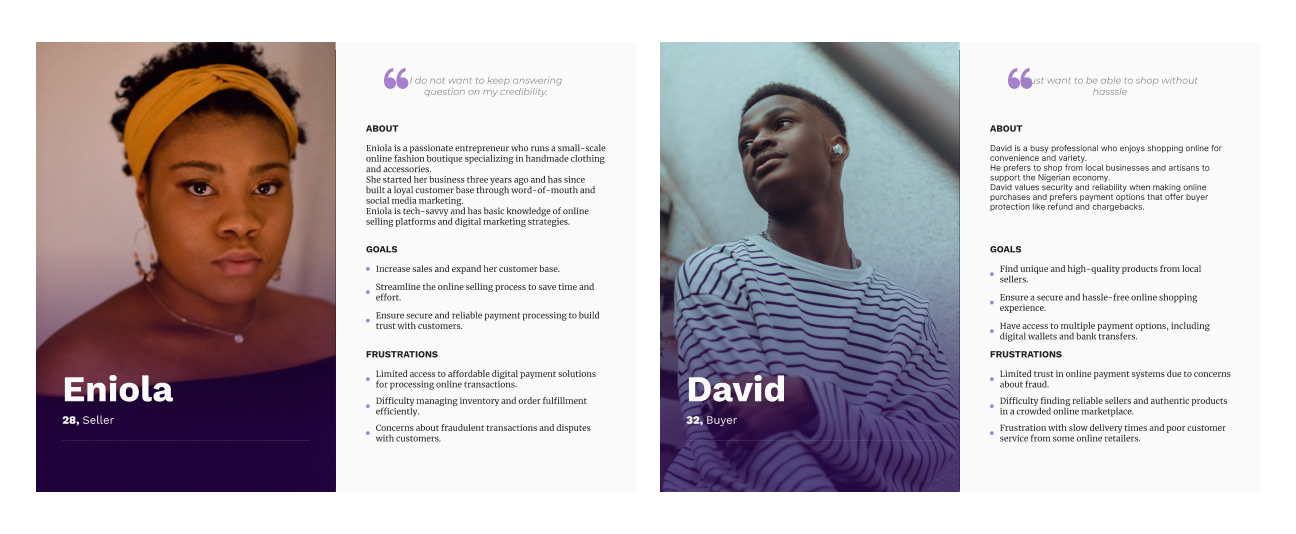







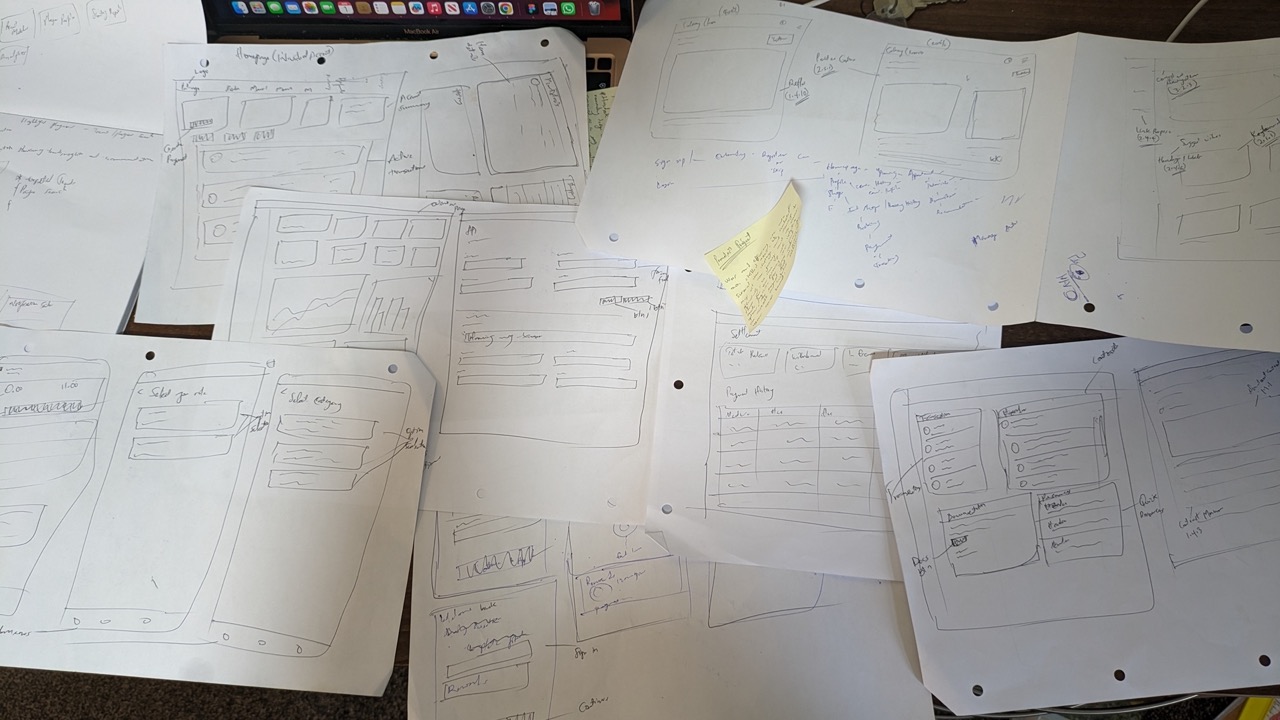












I developed a design system that was visually calming and easy to use though the following practices:
01
Minimal, purposeful use of color
02
Typographic hierarchy and contrast make important information stand out
03
Similar component layouts that repeat throughout the dashboards
Gilroy & SF Pro Display were chosen for they have excellent legibility characteristics in their letterforms and have friendly looks.

Using the two hues of the Paytrugo identity as a starting point, I expanded the color palette to accommodate the needs of the platform’s complex dashboard system.
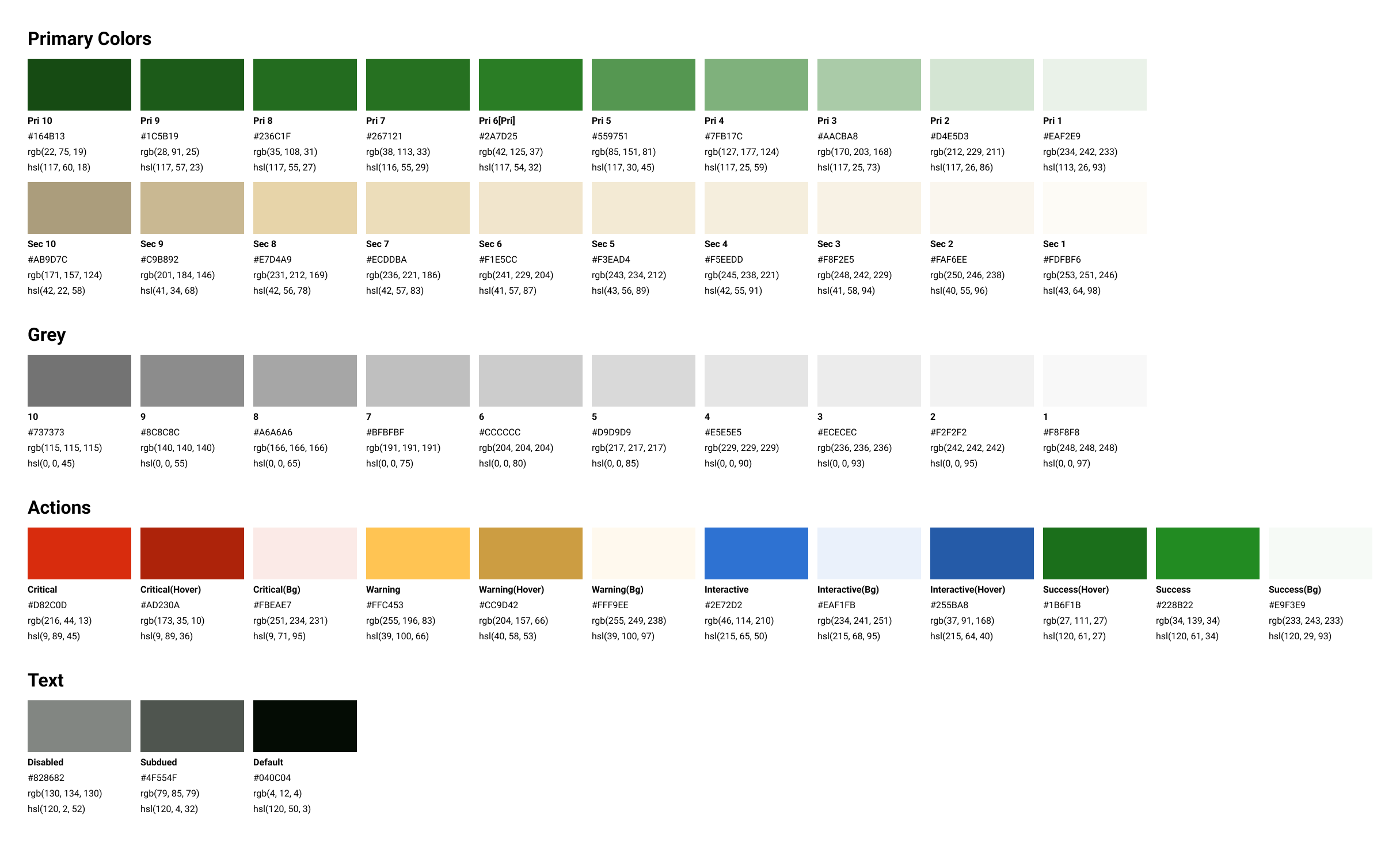
After multiple rounds of iteration, testing, and refinement, we arrived at a final design that reflected the needs and preferences of our target users. The final solution incorporated a seamless and intuitive user interface, support for a wide range of payment methods and currencies, robust security measures like KYC, and streamlined integration with existing e-commerce platforms and payment gateways.Throughout the process, we remained committed to our user-centric approach, ensuring that every design decision was grounded in empirical data and real-world feedback. The final outcomes not only met the functional requirements but also delighted the stakeholders.
Overview page to check stats on income flow, tour the app, chat support and create manual payment link.

New users onboarding screens showing distinction between creating a business or personal account. Here the user's personal details are collected to enable identity verification and secure transactions.



Secure uploaded documents and information like legal name, address and business registration document facilitate compliance and give other members increased confidence when transacting.
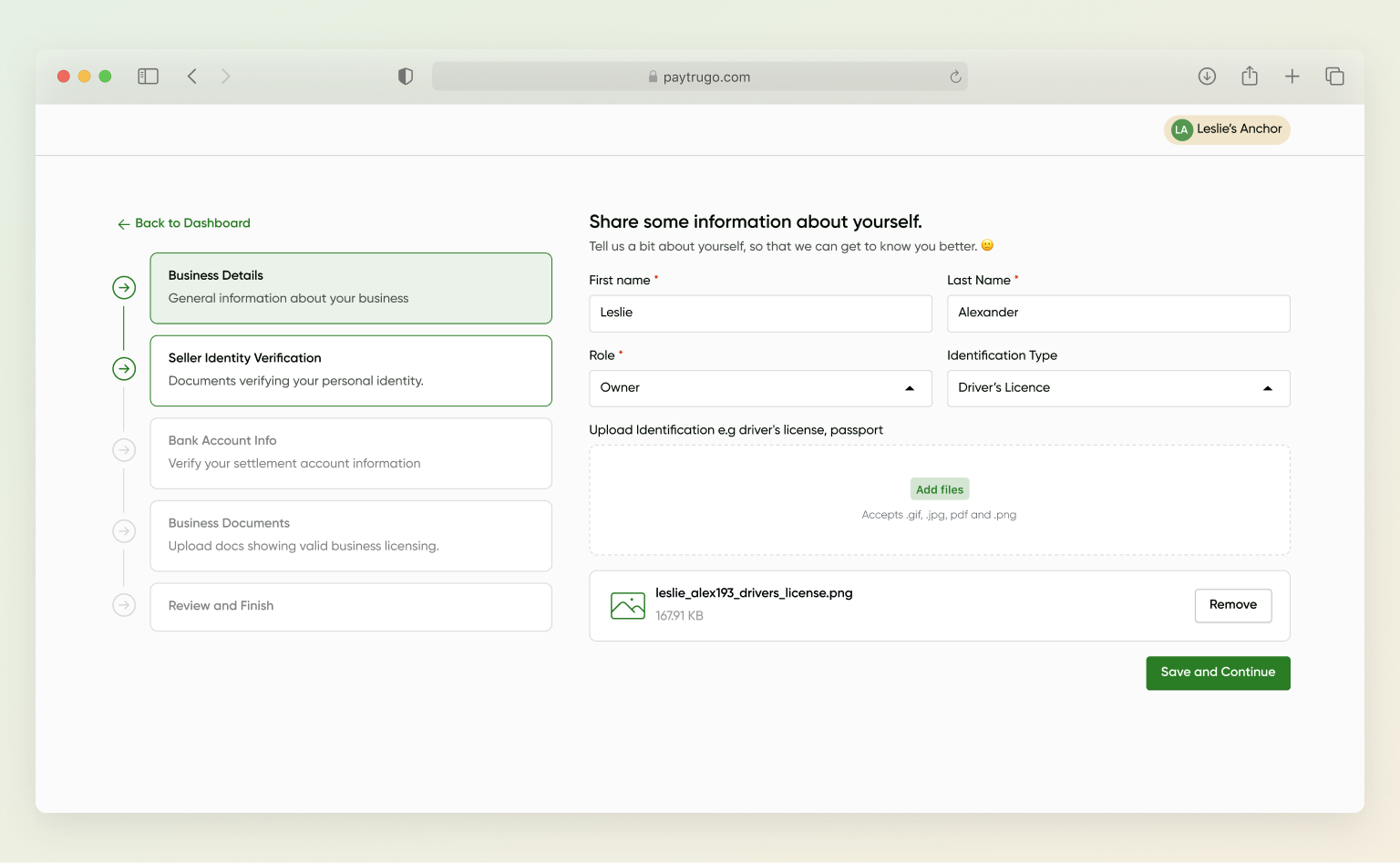

Vendors profile, social account and payment integrations settings are featured on the pages below.
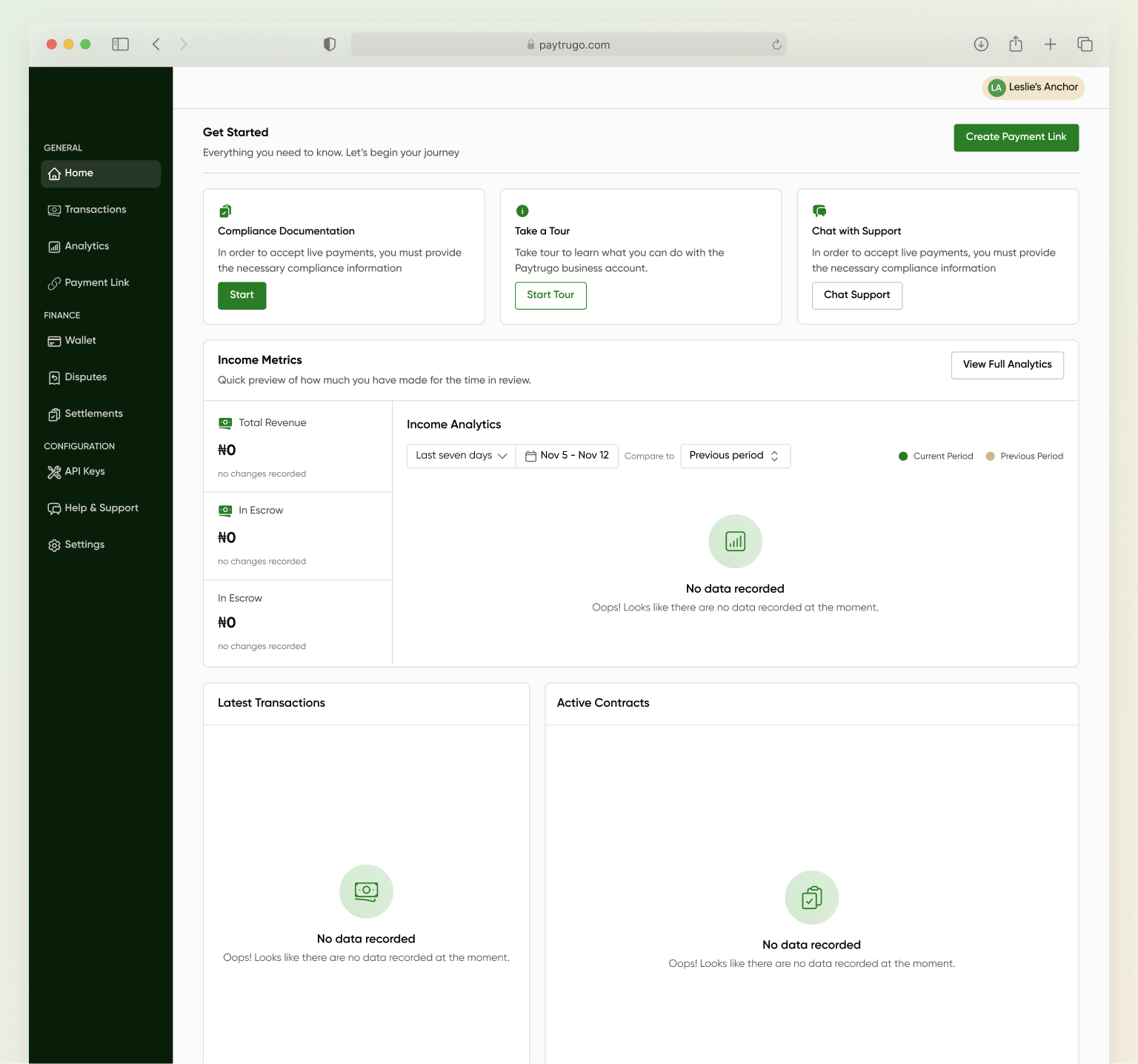
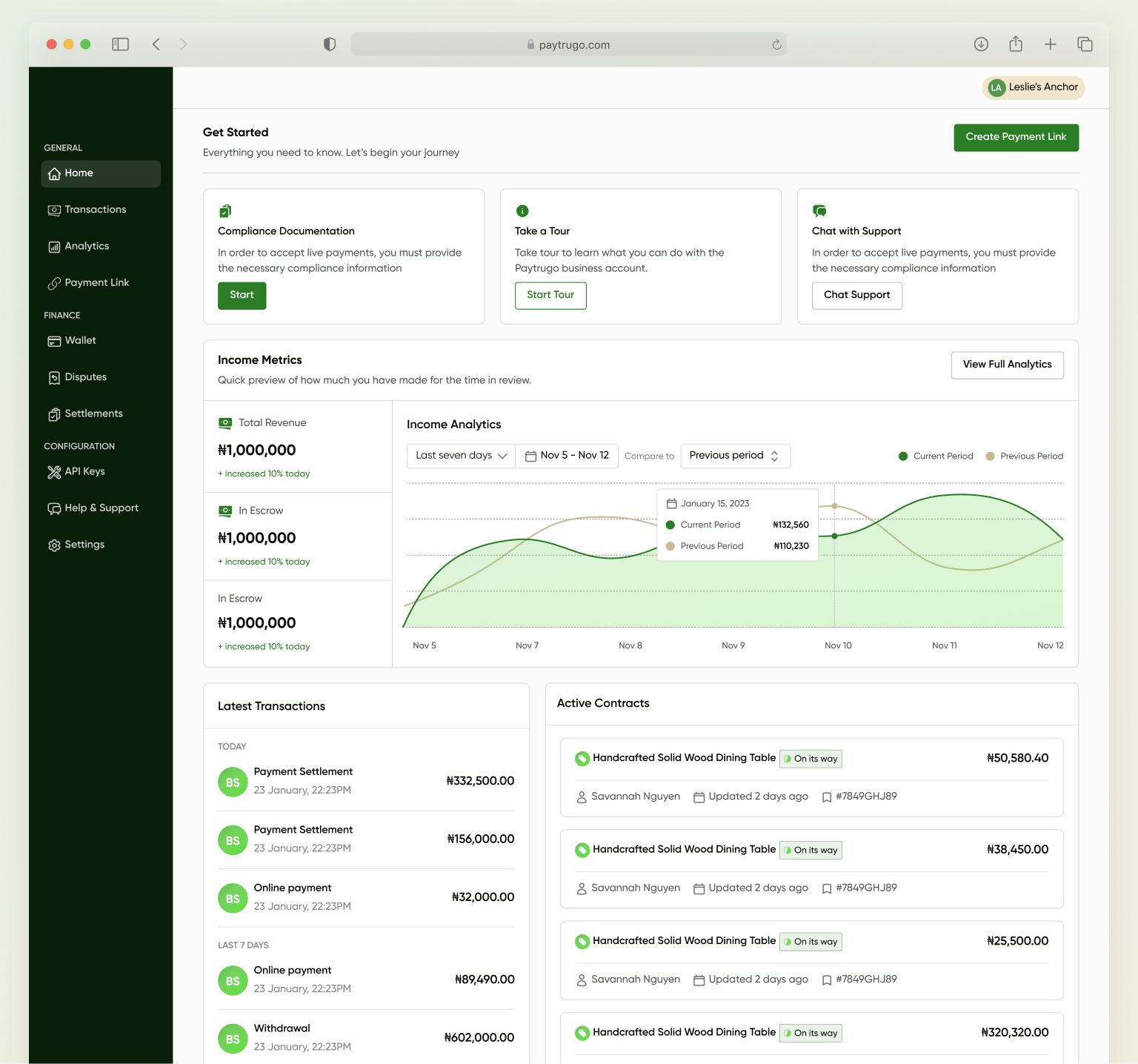
This page displays complete information on a specific transaction, providing transparency into the payment status, fees, timelines, and dispute/support options.

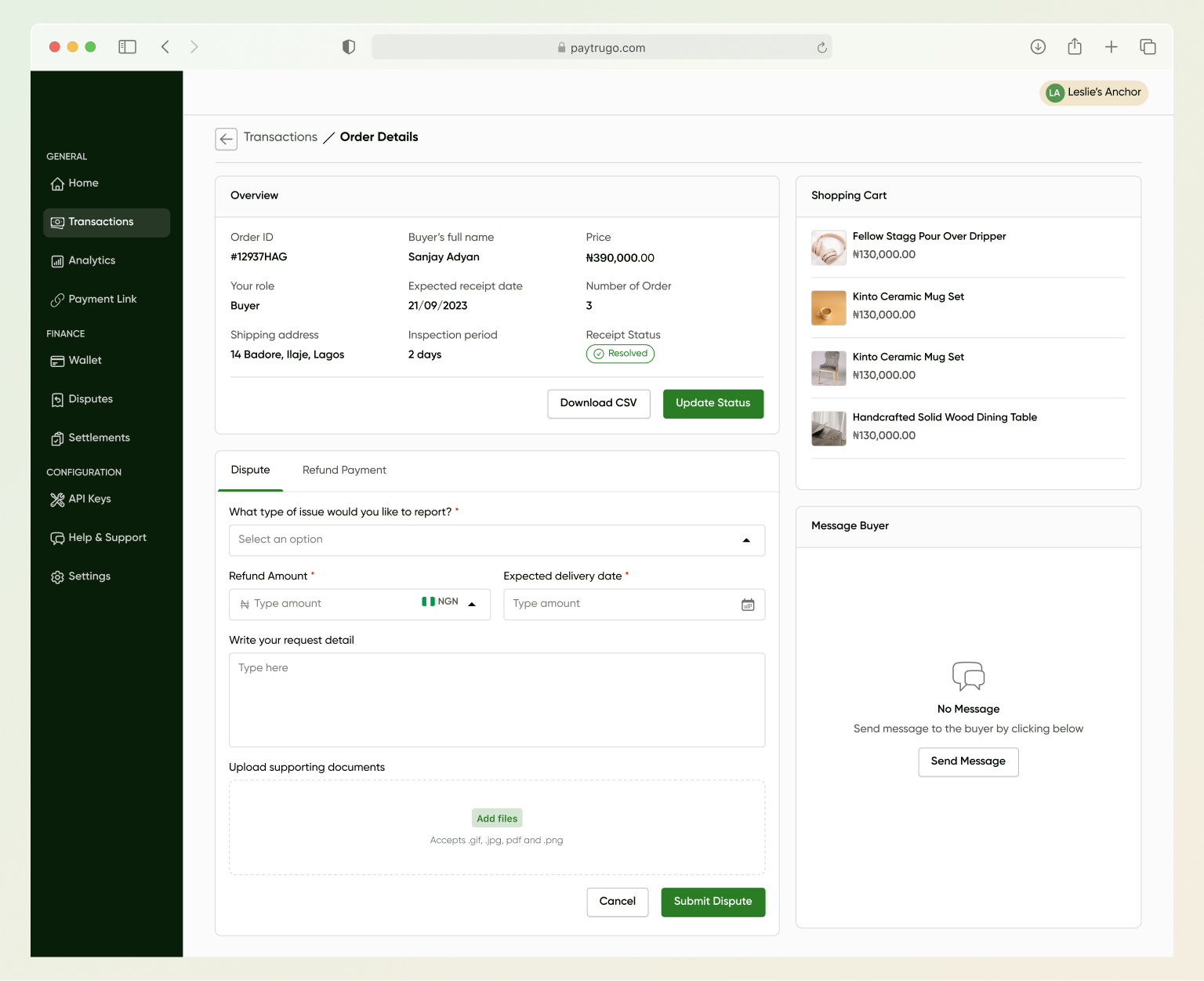
For developers and platforms integrating with Paytrugo, this page allows generating and managing API keys. Different key types provide tailored access for reading transaction data, facilitating payments or triggering payouts from managed accounts.
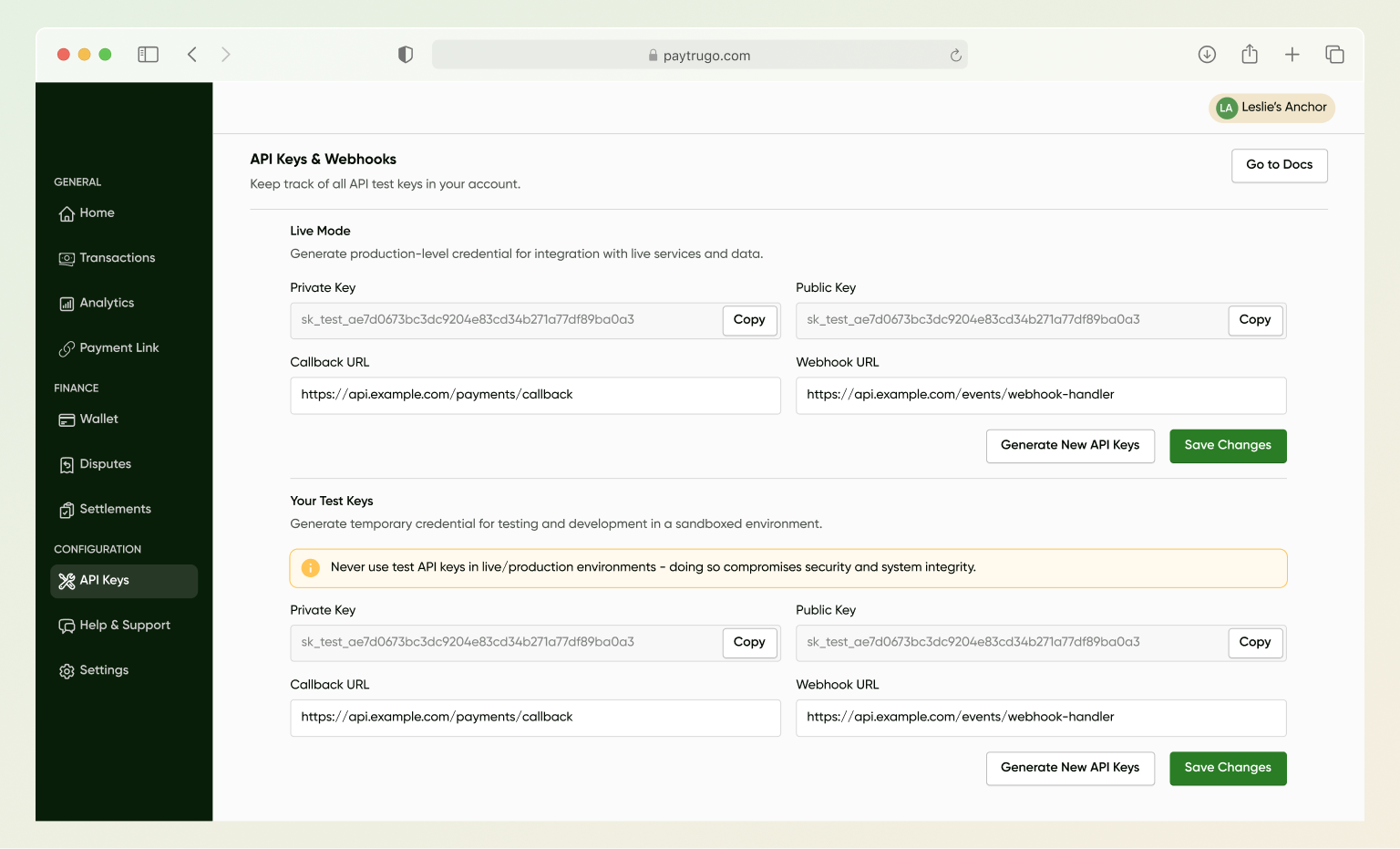
The disputes table offers a centralized list of all ongoing, resolved, and closed disputes initiated. As disputes proceed through mediation stages, the dispute page history section visually replays each step already taken.
